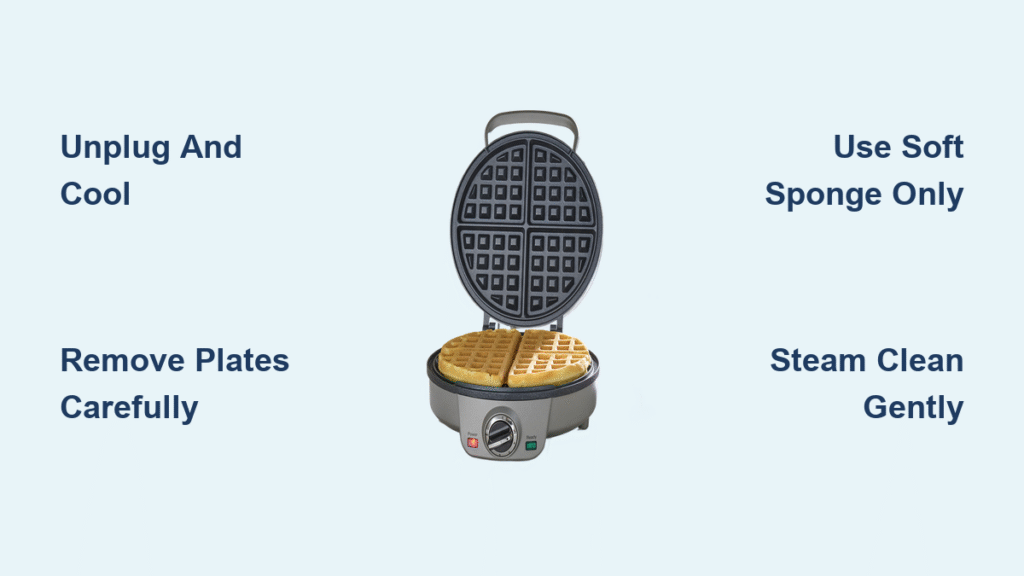That heavy Cuisinart base won’t fit in your cabinet, and those razor-sharp blades are scattered in random kitchen bowls. Sound familiar? You’re not alone—most owners struggle with storing their food processor without damaging the base or risking cuts from exposed blades. This guide reveals practical storage solutions that protect your investment while maximizing kitchen space.
You’ll discover why the original box isn’t your friend, learn blade storage tricks that prevent accidents, and find space-saving alternatives for every Cuisinart model. Whether you’re dealing with a compact DLC series or the massive 20-cup XP, we’ve got storage strategies that actually work in real kitchens. Knowing how to store Cuisinart food processor components properly ensures years of safe, efficient use.
Why Your Original Box Becomes a Storage Nightmare
Awkward Base Handling Without Proper Grip
The Cuisinart base weighs enough to make lifting dangerous when stored in its original box. That flimsy cardboard offers zero grip points, causing users to repeatedly bang the heavy unit against cabinet edges or drop it during retrieval. Within months, the box loses structural integrity from repeated handling, leaving your expensive appliance vulnerable to damage every time you need to use it.
Styrofoam Insert Space Wastes Valuable Cabinet Real Estate
While the styrofoam block organizes blades perfectly during shipping, it creates a storage footprint that’s 40% larger than necessary. This rigid insert forces you to dedicate an entire shelf to your processor, with no flexibility for other kitchen items. Over time, the styrofoam crumbles, leaving tiny white particles throughout your cabinet that mix with food particles and create cleaning headaches.
Cardboard Deterioration After Just One Year
Original packaging simply isn’t designed for kitchen storage conditions. Moisture from cooking warps the cardboard, tape loses adhesion, and the box becomes increasingly difficult to reassemble after each use. Within 18 months, most original boxes become structurally unsound—exactly when you need them most. This deterioration creates a false sense of security while actually putting your appliance at greater risk.
Secure Blade Storage That Prevents Accidents

Fixed Rod Blade Handling Hazards
DLC model blades feature permanent metal rods that protrude 3-4 inches from the disc center, creating unique storage challenges. These rods prevent flat stacking and create dangerous protrusions in drawers. Without proper protection, the rods scratch adjacent blades and cabinet interiors while posing serious cut risks during retrieval.
DIY Cardboard Blade Guards in 10 Minutes
Create custom cardboard sleeves using corrugated shipping boxes with these simple steps:
1. Cut rectangles slightly larger than each blade
2. Fold into taco shapes and secure with packing tape
3. Label each guard with permanent marker for quick identification
These guards cost under $2 to make and prevent blade-on-blade contact. The cardboard provides just enough cushioning to protect edges while remaining thin enough for space-efficient storage.
Right-Sized Storage Containers for Kitchen Cabinets
A 6-quart plastic storage bin accommodates all DLC blades with room for the chopping attachment—perfect for standard kitchen cabinets. Choose clear containers for visibility, and add a folded dish towel as cushioning between stacked blades. Avoid file-folder containers—they’re oversized for kitchen cabinets and waste valuable space, as confirmed by multiple users seeking better solutions.
Model-Specific Storage Solutions That Actually Fit

14-Cup and Smaller Models Storage Hack
These units fit Cuisinart’s official disc storage cases (measuring 12″ x 8″ x 3″), which stack efficiently and include individual blade sleeves. Store the motor base separately—its weight makes lifting the entire assembly impractical each time. This approach keeps your most frequently used attachments accessible while protecting blades from damage.
20-Cup XP Unit Storage Workaround
The XP’s oversized discs exceed standard storage capacity by 2-3 inches per direction, requiring creative solutions. Use a deep drawer with custom dividers made from 1/4″ plywood to accommodate these larger discs. Install felt strips along divider edges to prevent scratching. Store the base on floor-level storage due to its 23-pound weight—never attempt to lift it to upper cabinets.
DLC Series Vertical Storage System
DLC blades need vertical storage to prevent rod bending. A simple wooden rack—similar to a plate holder—keeps blades upright and accessible. Mount this rack inside a cabinet door using 1″ screws and anchors for maximum space efficiency. This solution addresses the fixed rod challenge while keeping blades organized and safe from accidental contact.
Kitchen Cabinet Space Maximization Techniques

Smart Vertical Storage Arrangement
Install shelf risers to create two storage levels within existing cabinets. The processor base sits on the lower level, while blades and accessories occupy the upper tier. This simple modification doubles storage capacity without cabinet modifications, solving the space constraint problem many users face with standard cabinet dimensions.
Cabinet Door Storage That Works
Adhesive hooks hold the power cord and small attachments inside cabinet doors, utilizing otherwise wasted space. Magnetic strips securely store metal blades safely away from fingers while maintaining visibility. These solutions keep sharp items secure while making components easily accessible during food preparation.
Weight Distribution for Safe Access
Store the heavy base on cabinet bottoms, never on upper shelves where it could cause injury if accidentally dislodged. Position frequently used attachments at chest level for ergonomic access, reducing strain during retrieval. Reserve eye-level storage for lighter items like the pusher assembly and recipe book to maintain a logical workflow.
Safety-First Storage Practices You Must Implement
Blade Handling Protocol to Prevent Cuts
Always grasp blades by their center hubs, never the cutting edges. Store blades with cutting edges facing downward in their designated slots to minimize accident risks. Create a simple blade inventory list taped inside the cabinet door to track all pieces—this prevents misplacement and ensures nothing gets lost in storage.
Childproofing Your Processor Storage Area
Install child locks on lower cabinets containing processor bases, even if you don’t have young children visiting regularly. Store blades in latched containers within locked cabinets, as curious fingers can quickly find their way past simple cabinet doors. Position the heaviest items toward cabinet backs to prevent tipping when doors open unexpectedly.
Sharp Edge Protection That Saves Fingers
Apply colored electrical tape to blade edges as visual warnings, especially for household members less familiar with the equipment. Use blade covers even during short-term storage—most accidents happen when rushing during meal preparation. Consider a dedicated “sharp tools” drawer with rubber matting to prevent sliding and accidental contact.
Alternative Storage Locations When Cabinets Are Full
Pantry Integration for Centralized Storage
Designate a single pantry shelf for all food processor components using labeled bins for blades, accessories, and manuals. This centralizes everything while keeping sharp items away from cooking zones. The pantry’s typically cooler, drier environment also helps prevent moisture-related issues during storage.
Appliance Garage Conversion
Convert existing appliance garages into processor storage by removing small appliance dividers. The roll-down door conceals the bulky base while maintaining countertop access. Add LED strip lighting for visibility when retrieving components in low-light conditions.
Under-Sink Base Storage Option
Install a pull-out drawer system under kitchen sinks specifically for base storage. Ensure waterproofing with rubber mats and avoid storing blades in this potentially damp environment. This location works best for the motor base only, keeping it protected while freeing up valuable cabinet space.
Maintenance During Storage to Extend Processor Life
Essential Pre-Storage Cleaning Routine
Disassemble completely before storage—residual food particles attract pests and create odors. Dry all components thoroughly to prevent mildew growth in storage containers. Apply a light coat of mineral oil to blade edges to prevent rust during extended storage periods.
Monthly Inspection Checklist
Check for moisture accumulation in storage containers, especially during humid seasons. Inspect cardboard blade guards for deterioration that could expose sharp edges. Verify all pieces are present before returning to storage after each use—this prevents misplacement and ensures nothing gets lost.
Quick Reference Storage Guide by Usage Frequency
For Daily Use: Keep base on counter, store blades in designated drawer insert
For Weekly Use: Store base in lower cabinet, blades in labeled container on shelf
For Monthly Use: Store entire unit in pantry with protective covers
Space Requirements by Model:
– 7-11 cup: 1 cubic foot cabinet space
– 14 cup: 1.5 cubic feet
– 20 cup XP: 2.5 cubic feet plus floor space
Final Storage Rule: If lifting your Cuisinart base causes strain, it’s stored incorrectly. Prioritize safety and accessibility over hiding the appliance completely. Your storage solution should make food processor use more convenient, not create another kitchen obstacle course. Proper storage protects your investment while ensuring your Cuisinart remains ready for action whenever meal prep demands it.





